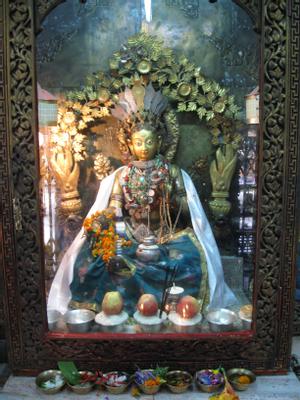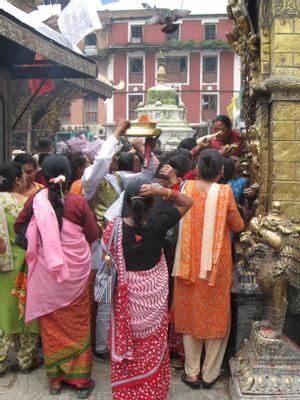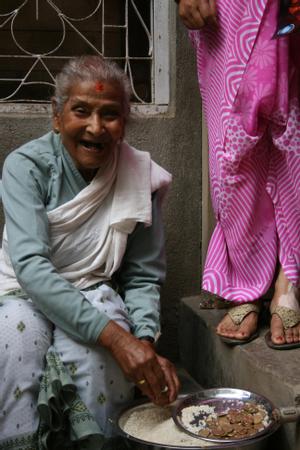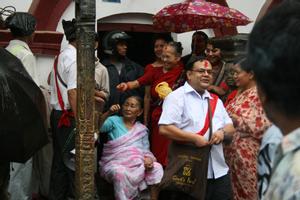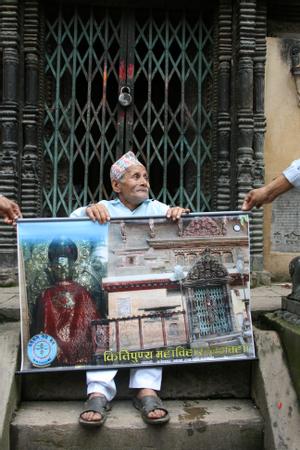Pañcadān
This festive ritual is one of the highlights of the Buddhist month of Gunlā for the Newars and corresponds in its annual execution to the Samyak festival, which is celebrated every five years in Patan and every twelve years in Kathmandu. It has its origin in an incident from the Kapiśāvadāna's account of Buddha Dīpaṅkara, the first of twenty-four Buddhas before Buddha Śākyamuni.
The focus of this festivity is the ritual worship of the Vajrācārya and Śākya, the castes at the top of the hierarchy of the Buddhist-oriented population in Nepal, by the Buddhist community through certain prescribed offerings, which vary depending on the specific context.
The term Pañcadān derives from the compound puṇya-jā, piṇḍa-jā, or paṇḍāju-jā, but is interpreted with the current spelling as the offering of five gifts. The main offerings are vā (unhusked rice), jāki (husked rice), cho (wheat), ci (salt), and dakṣinā (money). Other offerings, however, include utensils used in everyday monastic life.
Similar to other ritual processions through urban space, the Pañcadān Vajrācārya and Śākya procession follows a fixed route through the most important courtyards of the Newar monasteries (Bāhāḥ and Bāhī) of the respective town. While reciting together certain verses related to the respective gift, they accept the offerings from the population.
A significant difference in the annual Pañcadān exists between Patan and Kathmandu. In Patan, larger-than-life Dīpaṅkara figures are carried through the city, worshipped, and placed in chronological order at the end of the procession in the Nāg Bāhāḥ courtyard.
Some Dīpaṅkara figures were donated to monasteries by wealthy members over time (some monasteries have several Dīpaṅkara figures) and bear the facial features of their respective donors. During the remainder of Gunlā, they are displayed in the courtyards of the monasteries and guarded during this period by a select group of Vajrācārya and Śākya who live in the monastery for this purpose during that month.
Attila Kárpáti
